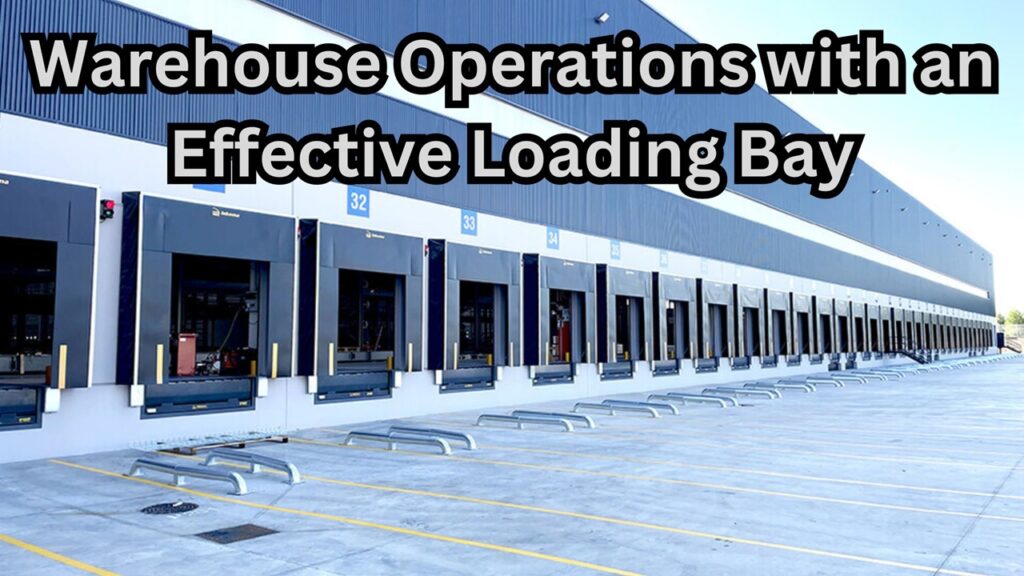Warehouses are crucial in the supply chain management of various industries. They serve as hubs for storing, managing, and distributing goods efficiently. One critical aspect of warehouse operations is the loading bay. This article discusses the specifics of how an effective loading dock can streamline your warehouse operations, making them more efficient and cost-effective.
Importance of a Loading Dock
A loading dock is the designated area where goods are loaded onto and unloaded from trucks. It ensures a seamless flow of goods in and out of the warehouse.
Optimal Layout and Design
An effective loading dock begins with the layout and design of the facility. The positioning of bays should be strategically planned to minimize congestion and maximize efficiency. It’s crucial to consider factors like the number of loading docks, their size, and their accessibility for different types of vehicles.

A well-designed bay layout should facilitate smooth traffic flow, allowing multiple trucks to be loaded or unloaded simultaneously without causing bottlenecks. Adequate space for maneuvering, turning, and queuing is paramount to prevent congestion and delays.
Efficient Dock Equipment
Investing in state-of-the-art dock equipment is key to streamlining loading and unloading processes. Dock levellers, for instance, ensure that trucks align perfectly with the loading dock, reducing the risk of accidents and damage to goods. Dock seals and shelters help maintain a consistent temperature within the warehouse, which is crucial for temperature-sensitive products.
Moreover, modern loading docks are equipped with advanced technologies such as RFID systems, which streamline inventory management and tracking. These technologies provide real-time information about goods entering and leaving the warehouse, enhancing overall visibility and control.
Safety Measures and Compliance
Safety should always be a top priority in warehouse operations. An effective loading dock should adhere to safety regulations and standards. This includes proper lighting, clear signage, non-slip surfaces, and safety barriers to protect both workers and goods.
Furthermore, compliance with Occupational Safety and Health Administration (OSHA) guidelines is imperative. This ensures that employees are provided with a safe working environment, reducing the risk of accidents and injuries during loading and unloading activities.
Efficient Workflow Processes
An efficient loading dock is more than just the physical infrastructure. It also encompasses workflow processes. One of the key aspects of streamlining operations is to establish standardised procedures for loading and unloading goods. This includes clear communication between truck drivers and warehouse staff, as well as the use of loading schedules to optimise resource allocation.
Implementing a first-come, first-served approach for trucks waiting to be loaded or unloaded can help minimise wait times and ensure fairness. Using technology such as Warehouse Management Systems (WMS) can help automate and optimise the allocation of tasks to workers, reducing errors and improving overall efficiency.
Maintenance and Regular Inspections
Regular maintenance and inspections are essential to ensure the continued effectiveness of your loading dock. Dock equipment, such as dock levellers, should be inspected and serviced regularly to prevent breakdowns and ensure safe operations. Any damaged or worn-out components should be promptly replaced to avoid disruptions in workflow.
Advanced Automation and Robotics
Advanced automation and robotics technologies can be implemented to further enhance the efficiency of a loading dock. Automated conveyor systems can streamline the movement of goods from the loading dock to their designated storage locations within the warehouse. These systems can significantly reduce manual labour and minimise the risk of human error in the transportation process.
Conclusion
In conclusion, an effective loading bay is a crucial component of streamlined warehouse operations. Its layout, design, equipment, safety measures, workflow processes, and maintenance all play pivotal roles in enhancing efficiency and reducing operational costs. By investing in the right infrastructure and adopting best practices, businesses can optimise their warehouse operations. This ultimately improves customer satisfaction and their bottom line.
Contents





